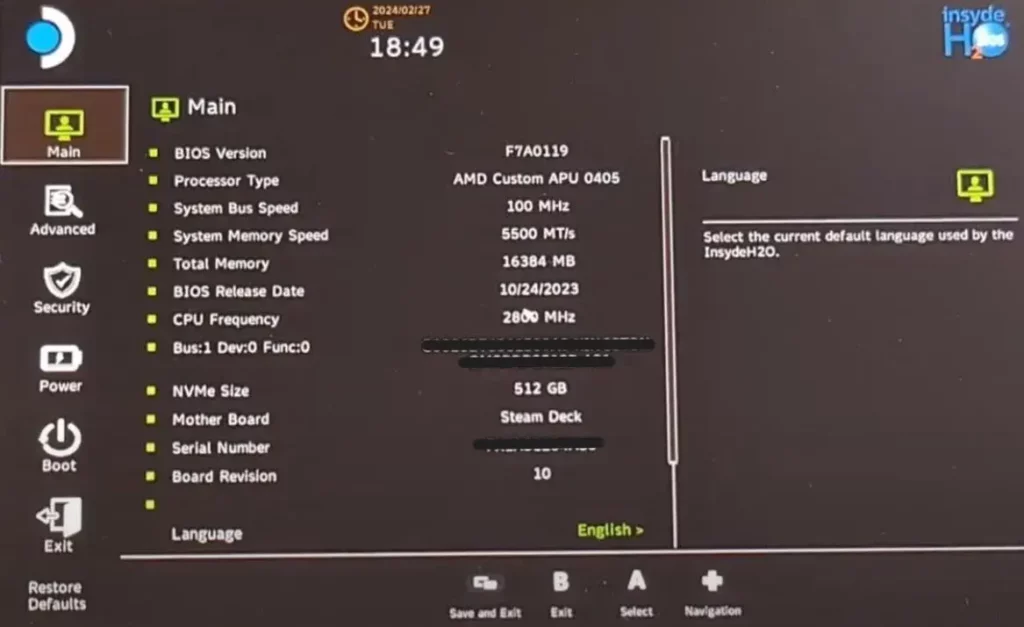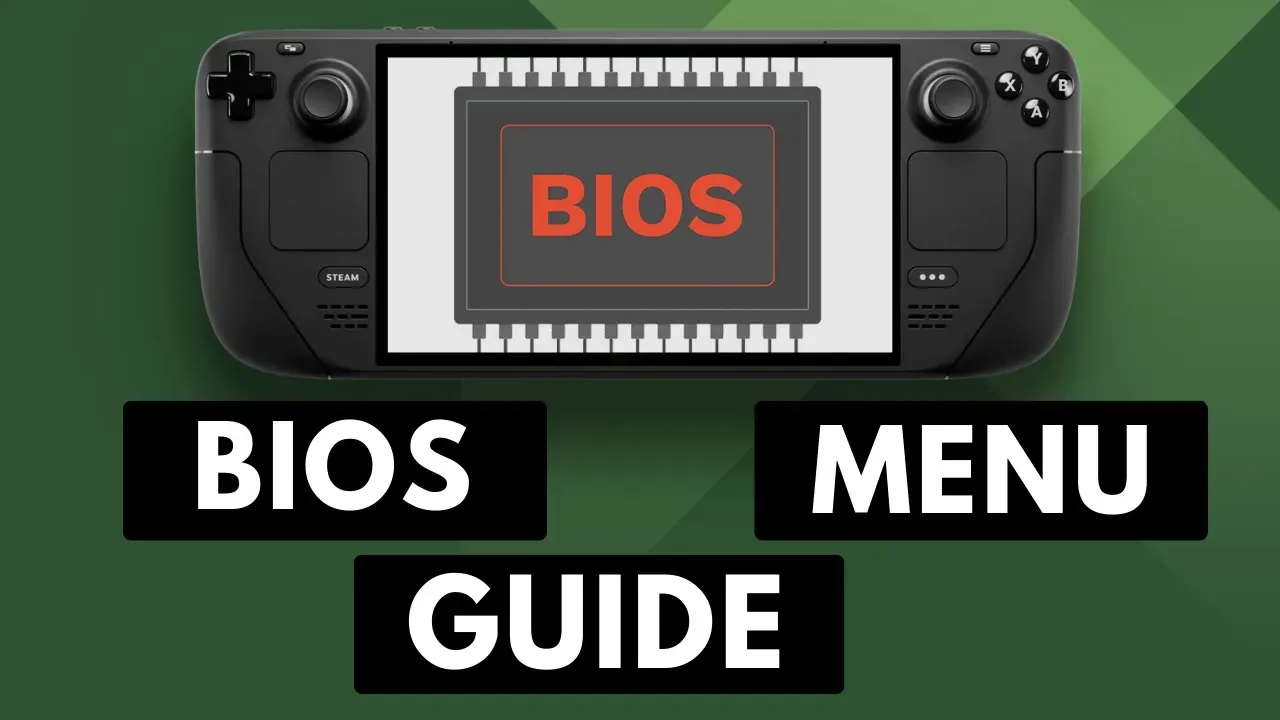Just like a desktop or laptop PC, the Steam Deck has what is referred to as a BIOS Mode. From here, you’ll have access to a plethora of different features and options which have been deemed too technical for the average user.
Here, you’ll find a list of every feature within the Steam Deck BIOS Utility Menu.
However, I’ll be taking things a step further and going over all of the things found within it. I will be doing my best to openly explain what these options are, and give you real-world examples of how they can be used. If you have any questions about something listed here, then please feel free to ask within the comments section below this guide.
Table of Contents
- What is the Steam Deck BIOS?
- How to Boot the Steam Deck into BIOS Mode?
- Steam Deck BIOS Feature List
What is the Steam Deck BIOS?
At its core, the BIOS of your Steam Deck is a firmware the device uses to initialize the hardware within it. Without it, the Steam OS software would not be able to interact with the CPU, GPU, controller, gyroscope, or anything else within the handheld console.
But that is what the BIOS firmware does on its own, without any user interaction.
The BIOS Utility Menu for the Steam Deck also comes with a number of features that can be enabled, disabled, changed, and adjusted. For example, we can disable (or re-enable) the Power LED within this menu. Just remember, these features can completely change the way your device performs and operates. So please do not go changing things around within the Advanced tab if you don’t understand what you are changing.

How to Boot the Steam Deck into BIOS Mode?
Before you can even go and change something within this utility menu, you first need to know how to access it. Remember, this is not meant to be accessed within Steam OS. So instead, we need to power down the Deck and reboot in a very specific way.
- Power down the Steam Deck.
- Wait 5-10 seconds after the screen goes black.
- Then press and hold the Volume Up button.
- Continue holding this button while you press (and release) the Power button.
- Still continue holding the Volume Up button while it boots up.
If done correctly, you will let go of the Volume Up button after you see the special boot loader menu (the image above) that appears. You’ll actually have to select the bottom right option (with the gear/settings icon) before you’re taken into the actual Steam Deck BIOS Utility Menu.
Once there, you’re able to navigate by first selecting a tab (on the left-hand side) before diving in and then changing one of those features. Even if a tab isn’t filled with features you can tweak (the Main tab, for example) there will still be some great information there about the hardware inside of your Steam Deck.
Steam Deck BIOS Feature List

Main Tab
There aren’t many settings to change here, but there are details about the specific hardware inside of your Steam Deck. Within the Main Tab of the Steam Deck BIOS, you’ll get information including your. . .
- BIOS Version
- Processor Type
- System Bus Speed
- System Memory Speed
- Total Memory
- BIOS Release Date
- CPU Frequency
- Bus:1 Dev:0 Func:0
- NVMe Size
- Mother Board
- Serial Number
- Board Revision
- Language
- System Time
- System Date
- AMD Firmware Version
- PSP BootLoader Version
- PSP SecureOS Version
- ABL Version
- Ucode Patch Version
- SMU FW Version
- DXIO FW Version
- MP2 FW Version
- VBIOS FW Version
- GOP Driver Version
- EC FW Version
- PD FW Version
Valve does allow you to change the default language of your Steam Deck, and this is one place that can be changed (another place is within the Settings area of Steam OS). You can also change the System Time and System Date from this BIOS Utility Menu as well. Which again, those can be changed elsewhere, but we’re also able to adjust them from this menu as well.
The rest of the entries here are purely data related and are unable to be changed here.
Many of these things will never change from what they are set to, anyway. Whatever your Board Revision is listed as, it will always be listed as that. Whatever your Serial Number, Mother Board, or CPU Frequency shows right now, they are likely to always be set that way. Other entries including your NVMe Size, System Memory Speed, and Processor Type will stay the same unless you physically upgrade the hardware.
This tab is also a great place to see if your Steam Deck BIOS is having difficulty detecting certain pieces of hardware.
